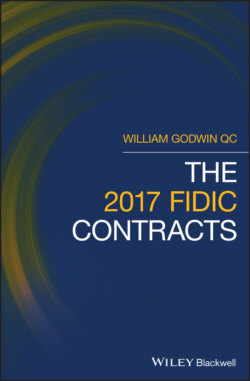Читать книгу The 2017 FIDIC Contracts - William Godwin - Страница 5
Foreword
ОглавлениеSince their publication in 1999 the three FIDIC contract forms or, as also aptly named, Books, have become not just well known and respected in international infrastructure contracting in all its many guises, but a major force for international cooperation and understanding. To those who have seen the free‐for‐all that can result from the absence of accepted norms in infrastructure procurement, FIDIC is a lifeline, more successful in its quiet deliberations than other over‐politicised international bodies but exercising a major and largely unseen influence over the well‐being of international projects which can lead less developed nations towards prosperity or financial ruin. Given the now truly global reach of FIDIC it remains a matter of national pride that the body was founded and modelled on UK practices, that the official and authentic texts remain the versions in the English language and that the now multifarious committees and other bodies of FIDIC retain many of its UK representatives and experts. These include the author of this work who has been closely involved with the new task group charged with writing the second editions of these three major FIDIC publications, still known as the Red, Yellow and Silver Books.
However well regarded, there inevitably comes a time for review and updating to take account of more recent developments in contracting and to build on the substantial experience gained from use of the forms over the intervening years. While the author is a specialist construction lawyer with wide experience of legal issues generated by the forms, the drafting and review bodies also have the inestimable advantage of including many distinguished specialists in other areas covered by the forms, from engineering and management to insurance and finance, and with access to FIDIC experts and commentators from many different jurisdictions and regions. The forms therefore remain a major international and cross‐disciplinary statement of good and accepted practice in this economically vital field.
The new Books will inevitably be the subject of renewed commentary and analysis, particularly in the light of issues and disputes which will arise in as yet unpredictable circumstances. It is notable that the books are now some 50% longer and thus cover in considerably greater detail many provisions, from the extended definitions section to enhanced notice provisions. Whether they will be regarded as over prescriptive and complex remains to be seen but, as pointed out in the introduction to the book, the forms must be usable to parties and individuals whose first language in not English. Thus one of the main aims of the new editions has been to increase clarity and certainty. Another aim has been to promote improved project management and dispute avoidance, important objectives which necessarily result in greater complexity.
This book provides, with the benefit of the author's unrivalled experience, a clear overview and comprehensive guide to each of the 2017 FIDIC Books. For the detailed contract provisions the forms themselves must be read along with the commentary which shows how each Book compares and relates to the others as well as pointing out changes from earlier editions including the 2008 Gold Book, the FIDIC Design‐Build‐Operate form. The book achieves all this with remarkable concision, being somewhat shorter than the three forms themselves and well illustrated with authorities on the earlier editions. No doubt the new forms will generate fresh rounds of court decisions and commentaries but the FIDIC Books will remain at the core of the international infrastructure industry which will continue to benefit from its accumulated experience and guidance.
Professor John Uff CBE QC
